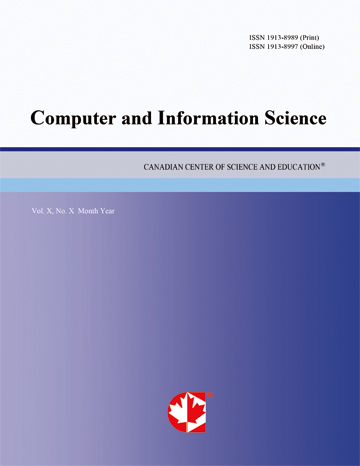Assortativity Analysis of Real-World Network Graphs based on Centrality Metrics
- Natarajan Meghanathan
Abstract
Assortativity index (A. Index) of real-world network graphs has been traditionally computed based on the degree centrality metric and the networks were classified as assortative, dissortative or neutral if the A. Index values are respectively greater than 0, less than 0 or closer to 0. In this paper, we evaluate the A. Index of real-world network graphs based on some of the commonly used centrality metrics (betweenness, eigenvector and closeness) in addition to degree centrality and observe that the assortativity classification of real-world network graphs depends on the node-level centrality metric used. We also propose five different levels of assortativity (strongly assortative, weakly assortative, neutral, weakly dissortative and strongly dissortative) for real-world networks and the corresponding range of A. Index value for the classification. We analyze a collection of 50 real-world network graphs with respect to each of the above four centrality metrics and estimate the empirical probability of observing a real-world network graph to exhibit a particular level of assortativity. We claim that a real-world network graph is more likely to be neutral with respect to the betweenness and degree centrality metrics and more likely to be assortative with respect to the eigenvector and closeness centrality metrics.
- Full Text:
 PDF
PDF
- DOI:10.5539/cis.v9n3p7
Journal Metrics
WJCI (2022): 0.636
Impact Factor 2022 (by WJCI): 0.419
h-index (January 2024): 43
i10-index (January 2024): 193
h5-index (January 2024): N/A
h5-median(January 2024): N/A
( The data was calculated based on Google Scholar Citations. Click Here to Learn More. )
Index
- Academic Journals Database
- BASE (Bielefeld Academic Search Engine)
- CiteFactor
- CNKI Scholar
- COPAC
- CrossRef
- DBLP (2008-2019)
- EBSCOhost
- EuroPub Database
- Excellence in Research for Australia (ERA)
- Genamics JournalSeek
- Google Scholar
- Harvard Library
- Infotrieve
- LOCKSS
- Mendeley
- PKP Open Archives Harvester
- Publons
- ResearchGate
- Scilit
- SHERPA/RoMEO
- Standard Periodical Directory
- The Index of Information Systems Journals
- The Keepers Registry
- UCR Library
- Universe Digital Library
- WJCI Report
- WorldCat
Contact
- Chris LeeEditorial Assistant
- cis@ccsenet.org
